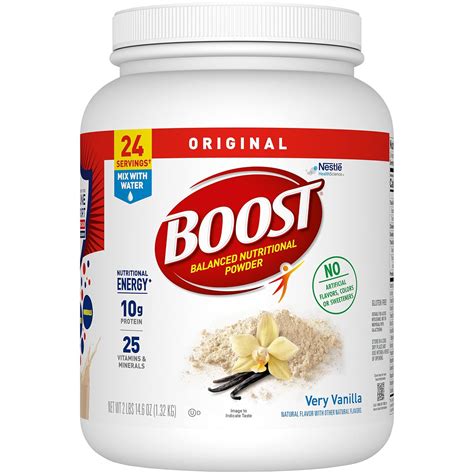Busy men: How to optimize strength training for peak performance without overtraining?

In today’s fast-paced world, many men juggle demanding careers, family responsibilities, and social commitments, leaving little time for the gym. The challenge isn’t just finding time, but optimizing those precious hours to build strength, enhance performance, and maintain a healthy physique without succumbing to overtraining. This guide provides actionable strategies for busy men to achieve their fitness goals efficiently and sustainably.
Understanding the Busy Man’s Challenge
The primary hurdle for busy men is time scarcity. Long, multi-hour gym sessions are often unrealistic. This necessitates a shift from traditional high-volume training models to highly efficient, impactful workouts. The goal is to maximize the stimulus for muscle growth and strength adaptation in the shortest possible time, followed by adequate recovery to prevent burnout and injury.
Efficiency doesn’t mean cutting corners; it means smart programming. Every minute in the gym must count, focusing on exercises that yield the biggest return on investment. Furthermore, understanding the critical role of recovery outside the gym is paramount to sustained progress.

The Pillars of Optimized Strength Training
1. Prioritize Compound Movements
Compound exercises are your best friend. These movements engage multiple muscle groups and joints simultaneously, providing a potent stimulus for strength and muscle growth in less time. Instead of isolating individual muscles, focus on movements that mimic natural human functions and challenge the entire body.
- Examples: Squats (barbell, goblet, front), Deadlifts (conventional, sumo, Romanian), Bench Press (flat, incline), Overhead Press, Rows (barbell, dumbbell, cable), Pull-ups/Lat Pulldowns.
2. Embrace Progressive Overload
This is the fundamental principle for continuous improvement. To get stronger and build muscle, you must consistently challenge your body more than it’s accustomed to. This doesn’t always mean adding more weight; it can be achieved in several ways:
- Increasing the weight lifted.
- Performing more repetitions with the same weight.
- Doing more sets.
- Reducing rest times between sets.
- Improving exercise form and control.
- Increasing time under tension.
3. Smart Programming: Frequency & Intensity
For busy men, 2-4 strength training sessions per week are often ideal. Full-body workouts or upper/lower splits can be highly effective. The key is high intensity within each session, not high volume across many sessions. Aim for 3-5 working sets per exercise, pushing close to muscular failure while maintaining good form.
- Frequency: 2-4 days/week.
- Duration: 45-60 minutes per session, including warm-up.
- Focus: Quality over quantity. Make every set count.

Nailing Recovery to Prevent Overtraining
Training is only half the battle; recovery is where your muscles grow and repair. Neglecting recovery is the fastest route to overtraining, diminishing returns, and increased injury risk.
1. The Non-Negotiable: Sleep
Aim for 7-9 hours of quality sleep per night. Sleep is when your body produces growth hormone, repairs muscle tissue, and restores energy levels. Chronic sleep deprivation elevates cortisol (stress hormone) and hinders recovery, making training counterproductive.
2. Fueling for Performance & Recovery
Nutrition provides the building blocks for muscle repair and the energy for your workouts. Focus on a balanced diet rich in:
- Protein: Essential for muscle repair and growth (e.g., lean meats, fish, eggs, dairy, legumes).
- Complex Carbohydrates: Provide sustained energy for workouts and replenish glycogen stores (e.g., whole grains, sweet potatoes, fruits).
- Healthy Fats: Crucial for hormone production and overall health (e.g., avocados, nuts, olive oil).
- Hydration: Drink plenty of water throughout the day.
3. Active Recovery & Stress Management
Incorporate light activities like walking, stretching, or foam rolling on rest days to promote blood flow and reduce muscle soreness. Equally important is managing mental stress, which can be as taxing on your recovery as physical stress. Practices like mindfulness, meditation, or simply taking breaks can significantly aid recovery.

Strategic Deloads and Listening to Your Body
Overtraining occurs when the demands of training exceed your body’s ability to recover. Key signs include persistent fatigue, prolonged muscle soreness, decreased performance, irritability, disrupted sleep, and frequent illness. To prevent this, incorporate strategic deload weeks every 6-8 weeks, where you significantly reduce volume or intensity, allowing your body to fully recover and supercompensate.
Furthermore, pay attention to subtle cues from your body. If you feel excessively fatigued, experience joint pain, or find yourself consistently performing worse in the gym, it might be time for an unscheduled rest day or a mini-deload. Pushing through these signals will only lead to diminishing returns and potential injury.

Putting It All Together: A Sample Approach
Consider a 3-day per week full-body routine:
- Day 1 (Monday): Squats, Bench Press, Rows, Overhead Press, Face Pulls.
- Day 2 (Wednesday): Deadlifts, Incline Press, Pull-ups, Lunges, Plank.
- Day 3 (Friday): Overhead Press, Rows, Goblet Squat, Push-ups, Hamstring Curls.
Each session would focus on 3-4 sets of 5-10 repetitions per exercise, with adequate warm-up and cool-down. This structure hits major muscle groups multiple times a week, allowing for high-frequency exposure to movements without excessive volume in any single session.

Conclusion
Optimizing strength training for busy men is about intelligent design, not endless hours. By prioritizing compound movements, embracing progressive overload, and diligently focusing on recovery through sleep and nutrition, you can achieve peak performance, build significant strength, and maintain a robust physique. Listen to your body, be consistent, and understand that sustained progress comes from a balanced approach to both training and recovery. Your time is valuable, make every rep count!








